Narrelle M. Harris's Blog, page 26
March 26, 2018
Sneak Peek: Photo Art for Scar Tissue and Other Stories
 In 2018, I’m planning on releasing a collection of short stories, both previously published and brand new, once my Patreon reaches its firstly monthly income goal. I’m not quite there yet, but I’m busy writing new stories for inclusion.
In 2018, I’m planning on releasing a collection of short stories, both previously published and brand new, once my Patreon reaches its firstly monthly income goal. I’m not quite there yet, but I’m busy writing new stories for inclusion.
The collection will be called Scar Tissue and Other Stories. Some of the stories are flash fiction based on lost and found things I’ve discovered (and photographed) in my wanderings. I’ve previously blogged some of these flash fictions on Mortal Words, but I’m editing those and writing new ones, as well as zhuzhing up the photographs on which they’re based using the fabulous Enlight app.
The artified photos will appear in the book next to their relevant flash fics. Above is a sneak peek of the image for the story ‘Bouquet’ – inspired by a bedraggled bouquet I found on the beach in St Kilda. This is a new story for the collection about mermaids and maidens and love and compromise.
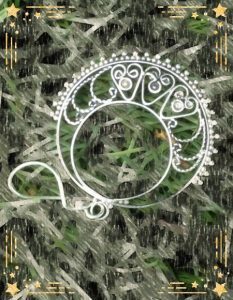 This art is for a flash fiction story called ‘Journey’, which was originally published here on my blog.
This art is for a flash fiction story called ‘Journey’, which was originally published here on my blog.
I’m aiming to make Scar Tissue at least 50,000 words long. New stories include ‘Faithful’, a canon-era Holmes Watson adventure in which John is a werewolf, and ‘Bad Night at Bite Club’, a story about Gary the vampire (from The Opposite of Life and Walking Shadows) and the son of an old frenemy.
Watson adventure in which John is a werewolf, and ‘Bad Night at Bite Club’, a story about Gary the vampire (from The Opposite of Life and Walking Shadows) and the son of an old frenemy.
I’m hoping to have a Ravenfall short story and an origin story from Kitty and Cadaver among the stories as well.
If you want to help me achieve my monthly goal (and the get a copy of the collection for your support) you can support my Patreon (for as little as a dollar a month)and get hold of the collection at least a week before it goes on general sale.
March 22, 2018
Cover reveal: Sacrifice
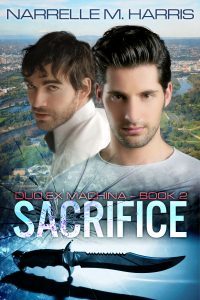 My novella Sacrifice (second in the Duo Ex Machina series) has been edited for reissue, and is presently being published every fortnight on my Patreon for my ‘Backstage Pass’ supporters.
My novella Sacrifice (second in the Duo Ex Machina series) has been edited for reissue, and is presently being published every fortnight on my Patreon for my ‘Backstage Pass’ supporters.
Willsin Rowe has already done a fabulous cover for it, and I couldn’t wait to share it, so here it is! That’s Frank looking messy on the left, and Milo being all pretty and well coiffed on the right.
The last chapter of Sacrifice will go up on my Patreon in around July, and then the new version of the ebook will be made available to all my supporters, and a week or so after that it’ll be generally available.
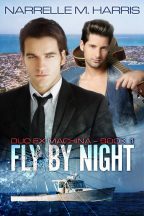 If you want to read the first Duo Ex Machina story, Fly By Night, you could either pick up the ebook at one of these stores:
If you want to read the first Duo Ex Machina story, Fly By Night, you could either pick up the ebook at one of these stores:
Fly By Night: Duo Ex Machina Book 1
 (Amazon US)
(Amazon US)Fly By Night (Amazon Australia)
Fly By Night (Amazon UK)
Fly By Night (Google Books)
Fly By Night (Kobo)
Fly By Night (iBooks)
Fly By Night (Nook Books)
Or support my Patreon and get Fly By Night (and other upcoming novellas and collections) as a welcome gift!
March 13, 2018
Recommended Kickstarter: The Creature Court
 It’s my week for writing about writers I love. Today it’s Tansy Rayner Roberts and her Creature Court series. Power and Majesty, The Shattered City and Reign of Beasts are a remarkable, richly realised, unpredictable and deeply satisfying dark fantasy trilogy about ancient battles, strange festivals, and shape shifters who can turn into one big beast or dozens of littler ones – with the bonus of really gorgeous frocks.
It’s my week for writing about writers I love. Today it’s Tansy Rayner Roberts and her Creature Court series. Power and Majesty, The Shattered City and Reign of Beasts are a remarkable, richly realised, unpredictable and deeply satisfying dark fantasy trilogy about ancient battles, strange festivals, and shape shifters who can turn into one big beast or dozens of littler ones – with the bonus of really gorgeous frocks.
So imagine my delight to discover that the trilogy is being re-released, along with a brand new story! And imagine the delight doubled when I learned that the fabulously talented Kathleen Jennings would be providing art for the books!
If you’re already on board and can’t wait to support the project, go straight to Kickstarter and show your love.
If you want to know more about the books and the Kickstarter campaign, I asked Tansy Rayner Roberts a few questions.
Why have you decided to re-release the Creature Court series through a Kickstarter?
Kickstarter is still one of the best ways to crowdfund a substantial arts or publishing project if you have costs to be covered up front. After running the successful Mother of Invention campaign for Twelfth Planet Press last year I have confidence in my own ability to handle a more personal campaign. I knew I wanted to bring Creature Court back into print after I got the rights back last year, but doing it through Kickstarter means I can release them all at once, paying for fantastic new art and design.
You’ve mentioned the original three books and a fourth, new book, Cab aret of Monsters . Which books is the Kickstarter supporting?
The Kickstarter is for all four books. I decided to write a prequel novella set in the same world because I knew a lot of people who are close Tansy supporters (especially Australians) already have copies of the Creature Court trilogy on their shelves, and I haven’t revised the text substantially (though I have revised it). This way, there’s something new for people who have been buying my books all along!
You’re re-editing the books for the re-release. What does that entail? Why did you decide to do that?
It’s not so much a decision, to edit before a rerelease… I have been laying out the books myself and I am physically incapable of doing that without making a few changes here and there. Sometimes it’s word choice, or rephrasing. More commonly it’s basic proofing – I was particularly surprised how many errors had got through the final volume of the series as printed!
I haven’t made any huge changes though I did find an alarming inconsistency in the flashback/backstory timeline which took a little behind the scenes industrial engineering before I was happy with it. They’re still essentially the novels I wrote between 2004-2011.
 How did Kathleen Jennings get involved with the project?
How did Kathleen Jennings get involved with the project?
I asked her! Kathleen and I have known each other for a long time now, and I love her work so much. It’s been exciting seeing an Australian artist take on such big international projects. We have a similar attachment to historical aesthetics, so I knew I wanted her on board if I possibly could – and I’m so grateful she was able to make time in her schedule for me.
We’ve worked through a lot of ideas already, and I’m excited to see how the books turn out. One of Kathleen’s talents is extremely detailed silhouette art which she creates with cut paper. We also have a great cover designer, Cathy Larsen, who will be producing the typography with vintage fonts to get across the 1920’s feel that infuses the novels.
How is her art going to be used in the re-rereleases and the new, fourth book of the series?
Book covers primarily – four book covers in one year is a major commitment (it helps a lot when you can pay the artist, hence the Kickstarter) but it’s really exciting to have all of them designed at the same time, and allows us to have a real coherence across the covers.
The novella cover will be developed over the next month or so and then the trilogy later in the year. I also commissioned some pieces up front so I could show our backers the visual style that we were aiming for – hence the lovely flapper with sword banner on the main Kickstarter page, and the iconic Art Deco pin design which Kathleen produced.
Several of our rewards including postcards will be based on Kathleen’s art… and I’m really hoping we make our stretch goals so I can offer the beautiful enamel pin in a variety of colours.
If you could turn into an animal (or a whole lot of little ones) – what animal would it be?
My first instinct was to wonder what animal is most industrious. I’ll take ten of those! Though cats have a pretty great life. I could happily live out my years as a sleepy bed full of cats.
Get on board the Creature Court Kickstarter

(I’m supporting at the Come to the Cabaret level ‘cos I want all the Jennings art as well as the new book!)
Review: The Midnight Quill Trio by Emily Larkin
 We all know I’m a Larkin fan, having previously gibbered excitedly about the books in her Baleful Grandmother series of regency romances with a magical element.
We all know I’m a Larkin fan, having previously gibbered excitedly about the books in her Baleful Grandmother series of regency romances with a magical element.
I’ve discovered I can always count on Emily Larkin for partnerships of equals: honourable men with heart and brains, and vulnerabilities of their own; women of humour, intelligence and courage, with determined agency even when they’re restricted by society and economic dependence. If I’ve had a rough week, I’ll always reach for Emily Larkin or Tansy Rayner Roberts.
Larkin’s non-magic regency romances are just as delightful, and I recently devoured the novel and two novellas in the ‘Midnight Quill’ series.
The Countess’s Groom
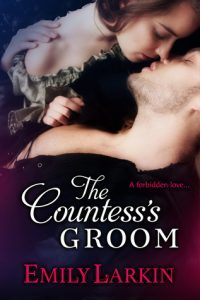 The series begins with a novella set in 1763, The Countess’s Groom, in which a terribly abused young wife is falls in love with her groom, Will Fenmore, who is trying desperately to save her from her brute of a husband without ruining her. The Countess, Rose, is just as imprisoned in her vile husband’s absence by her maid Boyle.
The series begins with a novella set in 1763, The Countess’s Groom, in which a terribly abused young wife is falls in love with her groom, Will Fenmore, who is trying desperately to save her from her brute of a husband without ruining her. The Countess, Rose, is just as imprisoned in her vile husband’s absence by her maid Boyle.
It’s not all down to Will, however. Rose finds courage and determination, and slowly learns to trust the giant but gentle Will. She learns from him, too, that love, and making love, can be tender and joyful.
Larkin always paces her stories perfectly, with just enough detail, just enough danger, to keep the heart racing, even though you know love will win.
Throughout her trials, Rose keeps a diary of her experiences, from the abuse at the hands of the Count, to her blooming under Will’s loving touches. She keeps quite explicit details, and it’s this diary, hidden away in the walls of her room, which is found and made good use of in the novel-length story of the trio.
The Spinster’s Secret
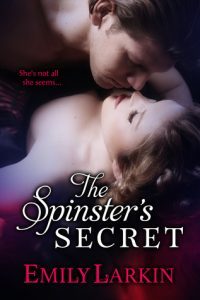 Set in 1815, The Spinster’s Secret sees Edward Kane returning from war, his face and hand disfigured from his wounds at Waterloo. He comes to the grim Creed Hall to return the worldly goods that belonged to his dear friend Toby, Strickland who died before his eyes in the battle.
Set in 1815, The Spinster’s Secret sees Edward Kane returning from war, his face and hand disfigured from his wounds at Waterloo. He comes to the grim Creed Hall to return the worldly goods that belonged to his dear friend Toby, Strickland who died before his eyes in the battle.
Circumstance leads Edward to make a rash promise to Sir Arthur Strickland – Sir Arthur has found that a scurrilous author lives in his town! Disgusted, he wants the perpetrator found, exposed and driven from the too-appropriately named Soddy Morton. He thinks the poor writer, whoever it is, should be left in peace (and after all, the Cherie stories do no harm) but he’s honour-bound now.
Which is awkward, considering who it is.
Sir Arthur’s niece, Matilda Chapple, is Toby’s beloved cousin. She’s considered too tall, too rangy and too plain to be a catch for anyone. Her natural wit, warmth and intelligence oppressed by the puritanical strictures of the household, she has a plan to earn enough money to set up an orphange school and escape. And she’s doing it with the aid of the diary of the former Countess and its explicit content.
In fact, Mattie is anonymously writing the very popular and very sensual ‘memoir’ of Cherie. The fact that Mattie’s a virgin matters not at all, as between the diary and one or two other saucy books, she’s making it all up very nicely. That is, until her publisher asks her to write the story of how the fictional Cherie lost her virginity to her dear, late husband.
Matilda is a clever, resourceful, strong willed and determined young woman, so never doubt she’ll find a way.
Larkin, as always, weaves a wonderful story with characters of depth and charm. Edward and his friend Gareth, who lost an arm at Waterloo, are both dealing with what we’d now call Post Traumatic Stress as a result of the horrors of that battlefield.
One thing I always appreciate about Larkin’s books is that her women may be strong or soft, frightened or bold, sporty or delicate, but they are never less than whole people, just as her heroes aren’t all alpha, and have their own fears and doubts as well as strengths and courage.
Both Edward and Mattie have their difficulties to bear, their obstacles to overcome. As the reader, you fear Mattie’s discovery as the writer of these erotic fictions, and want her to succeed in completing her manuscript so that she can fulfil her ambitions of independence. Butyou also want the love that’s growing between her and Edward to find expression without any dishonesty between them.
Larkin brings an ending which is true to both those things, and made me very happy with the balance.
I actually read The Spinster’s Secret before The Countess’s Groom, and neither suffered from being read out of order. (Larkin says in the trilogy forward that many people read them this way.) However, the third book in the series should definitely be the last to read, as it has spoilers in it for The Spinster’s Secret.
The Baronet’s Bride
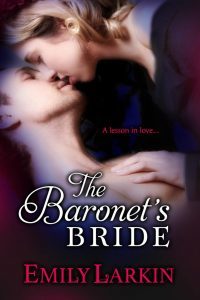 The last story in the series is the novella, The Baronet’s Bride, dealing with the wedding night of two of the secondary characters from The Spinster’s Secret.
The last story in the series is the novella, The Baronet’s Bride, dealing with the wedding night of two of the secondary characters from The Spinster’s Secret.
Gareth Locke lost his arm at Waterloo, and he’s still struggling to cope with the loss as well as the ongoing pain. But he’s determined to show no pain, no doubt, no weakness to his new bride, Cecily, whom he met at the dire Creed Hall. Cecily has been married before, which is a relief. That should make things easier.
Cecily, who was married for two weeks before her husband died in an accident, so her experience really isn’t what Gareth thinks it is. Cecy’s general view is that sex is a painful, messy, unpleasant thing that you endure for the sake of the man you love (who seems to enjoy the messy experience) and to have babies.
Those two attitudes are going to meet head-on in the most awkward wedding night ever.
Larkin of course can be trusted to write them out of the awkwardness towards gentler understanding and then a night of caring, loving, joyful passion. The whole night takes nine chapter but, oh, what chapters they are!
The three stories are available separately or bundled as the Midnight Quill Trio. I highly recommend all three if you like smart, funny regency romance full of well-rounded characters and charm.
Buy Midnight Quill Trio
Midnight Quill Trio [image error] (Amazon US)
Midnight Quill Trio (Amazon Australia)
Midnight Quill Trio (Amazon UK)
Midnight Quill Trio (iTunes)
Midnight Quill Trio (Kobo)
Midnight Quill Trio (NookBook)
Midnight Quill Trio (Google Play)
March 1, 2018
Melbourne Music: 2009
 Over on my Patreon, the Duo Ex Machina novella Sacrifice is being released in fortnightly chapters. It’s all scheduled and the cover will be revealed later in March.
Over on my Patreon, the Duo Ex Machina novella Sacrifice is being released in fortnightly chapters. It’s all scheduled and the cover will be revealed later in March.
In the meantime, I’ve started work on the brand new book in the series.
The next Duo Ex Machina novel, Number One Fan, will be set in Melbourne in 2009, five years after the end of Sacrifice.
One of the things I’ve been looking up is when various music venues began operating. I don’t want to have them popping up in one of those little, intimate music venues doing secret show if that venue wasn’t open yet!
I’m still deciding which real life venue I might use (if I decide to use a real one) for a particular sequence – partly because I’m still deciding what kind of music one of the boys is doing for a side project.
Cherry Bar (pictured, featuring my niece’s band Bronze) is one obvious pick. It’s been around since 2000 and has a great reputation for (and history of) nurturing local talent as well as hosting intimate events for big name acts, after parties and – once – saying no to Lady Gaga rather than oust a local band who’d booked the stage. Wikipedia claims that Noel Gallagher liked the venue so much he offered to buy it in 2002.
The building above it caught on fire in 2008. Cherry Bar only suffered water damage but it took six months to get the wiring fixed. However, it was definitely open and rocking again by 2009.
It’s such a classic Melbourne venue too – down an alleyway called AC/DC Lane. It got that name in 2004, in plenty of time for the setting of this novella, after being burdened with the tedious ‘Corporation Lane’ for most of its named life.
Another possible location for the scene is The Toff in Town, a venue on the second floor of a well-known ‘vertical laneway’, Curtin House on Swanston Street. (Curtin House is also home to Cookie Bar, the Metropolis bookstore, boutique fashion and a rooftop bar that’s a cinema in summer.)
The main bar features railway carriage-style booths, from which you can press a buzzer to summon a waiter for your order of sharing plates and excellent wines. The music venue is on the other side, featuring live music, DJs, album launches and the occasional comedy show. It would be perfect for a soft launch of the proposed joint project, especially is the music is a bit more alternative and distanced from Duo Ex Machina’s pop oeuvre.

The Toff, by the way, is named for the detective in John Creasey’s books from the 1930s-70s. The Toff was the Honourable Richard Rollison, the high-born amateur detective who mingles as easily with the rough types as with the gentry. Since Milo and Frank keep falling into crime plots very much against their will, there’s something very pleasing about using this venue as a location. (The Toff pictures here, by the way, are all publicity photos provided by the venue for my old Melbourne Literary App, which is no longer available.)
I have one more nominee for a 2009 location for a music event, and that’s The Blue Diamond Club. Designed to look like a Manhattan speakeasy but run on the 15th floor of a Queen Street office building, it had a lot of pizzazz and a sense of the theatrical. I actually used it in a scene in Walking Shadows, where various vampires converge, Gary proves not to be completely useless in a fight, and a vampire falls off the balcony. Good times.
The Blue Diamond was created in 2006 by Henry Maas, famous in Melbourne as the owner of the Black Cat cafe in Fitzroy, its companion music venue the Night Cat, and as the lead singer of jazz-funk-salsa band The Bachelors From Prague.
The Blue Diamond had a big blue (fake) diamond on a turning pedestal as you stepped out of the lift, and you always had the feeling that if James Bond wasn’t seducing secrets from Russian spies in one corner, then surely The Saint was insouciantly plotting somewhere to steal a lot of boodle.
Over time the Blue Diamond became less smooth and stylish speakeasy, where you had to be a member to get in (which we were), where everyone dressed up in the groove, and the mood was mellow, to a broader, less distinctive and much less atmospheric venue. I suppose a theatrical demeanour can only make so much money.
I’m at the end of this 2009 music reminiscence and I think I’ve now answered my own question.
Look out for a scene in Number One Fan set at The Toff in Town. Who knows, we might even get an action sequence out of that rooftop bar.
[A version of this post first appeared in my Patreon on 16 February 2018]
February 28, 2018
Review: The Portrait of Molly Dean by Katherine Kovacic
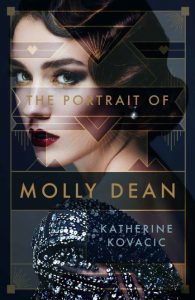 Real life is often an inspiration for fiction. Some real events resonate so strongly they inspire a lot of different ways to filter and explore the event, its social context and its repercussions.
Real life is often an inspiration for fiction. Some real events resonate so strongly they inspire a lot of different ways to filter and explore the event, its social context and its repercussions.
The 1930 Melbourne murder of schoolteacher and aspiring writer, Mary “Molly” Dean, is one such event. It’s referenced in George Johnston’s My Brother Jack, in the memoir of Betty Roland, who knew Dean, and in the 2002 play Solitude in Blue.
Poignancy and a mysterious fascination were lent to Dean’s grisly death by the fact that it remains unsolved, and that she was in a relationship with local artist, Colin Calahan, and had been the subject of two of his paintings.
I knew none of this when Echo Publishing sent me a copy of Katherine Kovacic’s The Portrait of Molly Dean, except for the fact it was based on a true event. I resisted any research in favour of just taking in the story as presented.
Kovacic’s debut novel is a marvellous blend of history and invention and uses the notions of art restoration as an effective narrative device to reveal her invented version of the truth.
It begins in 1999 when art dealer, Alex Clayton, buys the Colahan portrait of Molly Dean at an auction. Clayton specialises in finding artworks that have been obscured or underappreciated, buying them cheap, restoring them and proving their provenance, and re-selling at a considerable profit.
Her initial aim to research a little about Molly Dean’s death to make the picture more attractive to buyers (everyone loves a good murder mystery) becomes almost a compulsion. Shocked to learn the trial for the only suspect was abandoned on the day it was due to begin, she starts to investigate the 70 year old mystery herself.
While her friend John Porter begins to slowly clean the portrait and bring long-lost Molly back into the light, an unknown person is trying to obtain the painting from her.
Clayton’s investigation, told in the present tense, is interleaved with the story set in the 1930s, of Molly’s constrained life at home with her mother, her ambitions to become a journalist and novelist, and the night of her murder.
This 1930s story is, like the portrait in 1999, is slowly revealed, with care and attention to detail. As Alex explores the case and potential killers, the details of Molly’s life are slowly revealed. It’s an elegant little leapfrog progress, where each woman’s narrative reveals just enough to fuel the next act.
Modern Alex’s independence, backed by John and her dog Hogarth, is a complement to and a contrast with doomed Molly’s determination to break free from her awful mother’s house and assert her own independence.
The two women are very different but they have a kinship, and it’s easy to get emotionally connected to them both. While there’s nothing to be done about Molly’s fate, Kovacic cleverly entangles the reader into concern for Alex, whose investigations are of clear concern to someone from the past.
Kovacic’s style is clean and well-paced, and she manages to give the 1930s and the 1990s each a different feel without being jarring or sacrificing clarity or pace. There’s texture and pathos in this story, as well as courage and surprises.
Kovacic is careful to point out in the afterword of The Portrait of Molly Dean that her resolution to the mystery is her own invention. But it’s a good one, in a well-told story, and a very satisfying read.
Buy The Portrait of Molly Dean
The Portrait of Molly Dean (Echo Publishing)
The Portrait of Molly Dean[image error] (Amazon US)
The Portrait of Molly Dean (Amazon UK)
The Portrait of Molly Dean (Amazon Australia)
The Portrait of Molly Dean (Booktopia)
The Portrait of Molly Dean (Readings)
The Portrait of Molly Dean (Kobo)
The Portrait of Molly Dean (Book Depository)
The Portrait of Molly Dean (Dymocks)
Read more about Molly Dean
Public Record Office Victoria: Mary (Molly) Winifred Dean
Sydney Morning Herald article, 25 November 1930 (Trove)
February 20, 2018
Five Questions for Alan Baxter
Today, Alan Baxter answers five questions about his new book:
Alan Baxter
 1. What’s the name of your latest book – and how did you choose the title?
1. What’s the name of your latest book – and how did you choose the title?
The new novel is called Hidden City. Generally, I hate choosing titles. Every once in a while, a title will drop into place, but that’s very rare. Usually I agonise over them for ages. Thankfully, this was one of those rare occasions when the title was there right from the start and it stuck.
2. If you could choose anyone from any time period, who would you cast as the leads in your latest book?
I don’t like to say. People often ask me that question about books, but how I see a character may not be anything like how a reader sees them, and I don’t want to tread on that. There’s some description there in the book, of course, but beyond that I want the reader to build their own mental cast and however they look, that’s fine with me.
3. What five words best describe your story?
Urban fantasy horror noir weird.
4. Who’s your favourite fictional team?
Batman and the Joker. I love everything about both characters and how they fuel each other, and how their pasts created them and continue to inform them. I think they’re the two greatest fictional characters ever invented. (Of course, I mean the 80s/90s DC Comics versions, not the Adam West version [though I do love that show] or the modern movies.)
5. What song reflects a theme, character or scene in your book?
Well, this is a dangerous question to ask someone with tastes like mine. There’s a band called Strapping Young Lad, who have disbanded now, but they produced some of the heaviest shit ever and I love them. The lead singer/guitarist, Devin Townsend, is a musical genius, and he still makes amazing music with The Devin Townsend Project. Check them out!
But to answer your question about this particular book, I’m going to say “All Hail The New Flesh” from the Strapping Young Lad album, City. Brace yourselves.
About Hidden City
When the city is sick, everyone suffers.
Steven Hines listened to the city and the city spoke. Cleveport told him she was sick. With his unnatural connection to her, that meant Hines was sick too. But when his friend, Detective Abby Jones, comes to him for help investigating a series of deaths with no discernible cause, Hines can’t say no. Then strange fungal growths begin to appear in the streets, affecting anyone who gets too close, turning them into violent lunatics.
As the mayhem escalates and officials start to seal Cleveport off from the rest of the world, Hines knows the trouble has only just begun.
About Alan Baxter
 Alan Baxter is a British-Australian author who writes supernatural thrillers and urban horror, rides a motorcycle and loves his dogs. He also teaches Kung Fu. He lives among dairy paddocks on the beautiful south coast of NSW, Australia, with his wife, son, dogs and cat. He’s the multi-award-winning author of several novels and over seventy short stories and novellas. So far.
Alan Baxter is a British-Australian author who writes supernatural thrillers and urban horror, rides a motorcycle and loves his dogs. He also teaches Kung Fu. He lives among dairy paddocks on the beautiful south coast of NSW, Australia, with his wife, son, dogs and cat. He’s the multi-award-winning author of several novels and over seventy short stories and novellas. So far.
Read extracts from his novels, a novella and short stories at his website, on Twitter and Facebook, and feel free to tell him what you think. About anything.
Follow Alan:
Alan’s website
Alan Baxter on Twitter
Alan Baxter Author on Facebook
Amazon Author
Buy Hidden City
Hidden City (Amazon.com)
Visit Alan’s site for a full list of links.[image error]
February 13, 2018
Quintette of Questions: MC Baker
This week’s new romance release interview is with MC Baker:
MC Baker
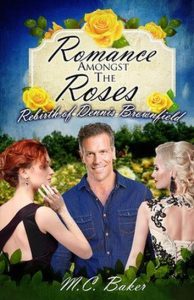 1. What’s the name of your latest book – and how did you choose the title?
1. What’s the name of your latest book – and how did you choose the title?
Romance Amongst the Roses:
The rebirth of Dennis Brownfield. The title sort of picked itself. The Rose festival in Tyler is a huge event and suited the story to a tea. The rebirth of Dennis Brownfield describes the main characters journey.
2. If you could choose anyone from any time period, who would you cast as the leads in your latest book?
Hugh Jackman would make a great Dennis. Raquel Welch is the red head for Pam, although I would love to hear who others pick. Jackie Weaver for Gloria – a younger version than now though. Maybe even Noni Hazelhurst. (My playschool days may be clouding my thinking.)
3. What five words best describe your story?
Romantic, touching, sexy, funny, heartwarming.
4. Who is your favourite fictional couple or team?
Thelma and Louise always get a run in my mind, I wish I’d written that story. Julia Roberts and Hugh Grant in Notting hill too.
Can I sneak in Mork and Mindy?
5. What song always makes you cry?
What a Wonderful World. It’s so beautiful and descriptive. I hate seeing the video clip on tv though as it’s always with footage from good morning Vietnam.
I could have The Yellow Rose of Texas as the book’s theme song.
That’s a joke.
b. Or What song reflects a theme, character, relationship or scene in your book?
Islands in the Stream. Dolly has a part in the story but the song is relevant to the story.
About Romance Amongst the Roses
Emerging from a dark period following the heartbreaking loss of his wife, Dennis Brownfield is coaxed into embarking on a trip to Texas to visit his son and new daughter-in-law. An errant luggage trolley pushed by Dolly Parton impersonator Gloria almost ends his journey early. She proves instead to be the ideal companion for the long flight to Dallas.
Arriving in the Rose Capital of America, Tyler Texas, right at the time of the annual Rose Festival, provides Dennis with the best chance to meet his son’s new family, and explore his new home.
Accompanying widowed family friend Pam on a simple day trip to Dallas, however, changes everything. Quick action by Dennis avoids a disaster and he is hailed a hero. This opens the door for a cast of characters both real and surreal to have a massive impact on this Aussie widower’s journey as they reveal to him that love hasn’t finished with him yet.
Like the people he touched in this story of his rebirth, you too will fall in love with Dennis, and laugh along with his quirky Australian humour.
About MC Baker
 MC Baker lives peacefully in rural Victoria, indulging in his favourite past time of entertaining with his stories. Romance amongst the roses is his first published novel.
MC Baker lives peacefully in rural Victoria, indulging in his favourite past time of entertaining with his stories. Romance amongst the roses is his first published novel.
Follow MC Baker
Buy Romance Amongst the Roses
Romance Amongst the Roses (Amazon.com)
Romance Amongst the Roses (Amazon UK)
Romance Amongst the Roses (Amazon Australia)
Romance Amongst the Roses (Amazon Canada)
Romance Amongst the Roses (Kobo)
Romance Amongst the Roses (Barnes & Noble)
Romance Amongst the Roses (Nook book)
Romance Amongst the Roses (iTunes)
February 10, 2018
Queer Victorian London
 In preparation for working on a short story collection set post-The Adventure of the Colonial Boy, I’ve picked up some books to give me insights into late-Victorian queer culture and society’s attitudes towards it.
In preparation for working on a short story collection set post-The Adventure of the Colonial Boy, I’ve picked up some books to give me insights into late-Victorian queer culture and society’s attitudes towards it.
Victorian attitudes to sex and sexuality (and to a whole bunch of things) is usually deeper and more textured than a cursory glance would indicate. And while it’s true that terms like ‘gay’ and queerness as it’s currently lived and experienced were not how Victorians understood them, that doesn’t negate the fact people who would probably now identify on that spectrum were managing their lives, one way or another.
Which all brings me to this reading matter, designed to help me understand more about how queerness was experienced and lived in the late 19th and early 20th centuries, so that I can translate those experiences for Sherlock Holmes and John Watson in a world where they have declared their love and physical desire for each other.

I tend to read books on these topics with a block of sticky notes at hand, so I can mark ideas I want to get back to.
The book pictured in the header, Catharine Arnold’s City of Sin: London and its Vices, is already festooned with notes for me to return to when I do the next round of research, which will be to go over marked passages and decide what to use and how.
One note in City of Sin refers to the pornography people could obtain in Holywell Street, including homosexual and lesbian representations. William Dugdale is noted as a “prolific publisher of filthy books” and further on, Arnold refers to the practice of pornographers having to smuggle their books into the UK, risking fines and imprisonment.
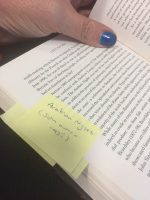 I have made a note that the unexpurgated copy of Richard Burton’s The Arabian Nights is very probably in John Watson’s private book collection. He’s an earthy man, after all, with a penchant for gambling and whisky. Why not a little saucy literature?
I have made a note that the unexpurgated copy of Richard Burton’s The Arabian Nights is very probably in John Watson’s private book collection. He’s an earthy man, after all, with a penchant for gambling and whisky. Why not a little saucy literature?
Further on I’ve marked the pages about the ‘telegraph boys’ who made extra money by having sex with men. The role of the Turkish baths (which Holmes and Watson frequent in canon) in homosexual liaisons is discussed 25 pages on from that.
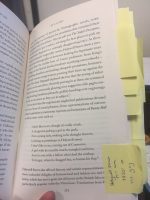 I expect to read more queer-specific details of London life in the three other books pictured above, and will doubtless leave those pages bristling like a paper-based porcupine in due course.
I expect to read more queer-specific details of London life in the three other books pictured above, and will doubtless leave those pages bristling like a paper-based porcupine in due course.
I’ve already started with Strangers: Homosexual Love in the Nineteenth Century by Graham Robb, and even the introduction has provided some valuable insights.
How will these snippets and suggestions be used? Will they become significant plot points or background detail?
At this point, who knows? But by filling up my brain with some of that colour, texture and depth, I hope to introduce just enough research to make the stories feel authentic and engaging without presenting them as a series of lectures of What I Learned About Queer Victorians This Summer.
NB: A version of this post originally appeared in my Patreon on 2 February 2018.
February 6, 2018
Five Questions for Charlie Raven
Today, Charlie Raven answers five questions about her new book:
Charlie Raven
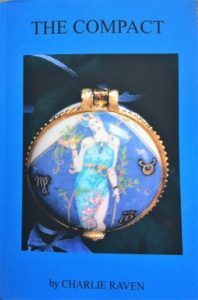 1. What’s the name of your latest book – and how did you choose the title?
1. What’s the name of your latest book – and how did you choose the title?
It’s called The Compact. The title just popped into my mind about halfway through the process of writing it. It came about because one of the themes of the story is the fear of old age. That fear is universal, of course, particularly for anyone who depends on their looks in their work, but back in the 1890s there were hardly any viable careers open to women, so the fear of ageing must have been even more acute.
A ‘compact’ refers first to those pretty little tins of pressed face powder that used to be carried in every woman’s handbag. Another older, perhaps more sinister meaning of ‘compact’ becomes apparent as the story progresses: a contract or covenant. There’s an occult covenant which one of the characters is affected by; and there’s also Alexandra’s contract with Minerva, which persuades her to agree to terrible things.
2. If you could choose anyone from any time period, who would you cast as the leads in your latest book?
Wow! What a great question. Well, let me think.
Sherlock Holmes does make a couple of brief appearances, but in this story, Dr Watson is the main character from that duo. Somehow, my mind wants him to look like David Burke’s portrayal in the 1984 ‘Adventures of Sherlock Holmes’ series.
Holmes is more difficult, as I have my own inner Sherlock and no actor has yet portrayed him perfectly.
Minerva, with her melodramatic manner, should be played by a glamorous, smouldering 1940s actress, such as Hedy Lamarr. Alexandra: h’mm, maybe a middle-aged Katherine Hepburn? Emma Thompson, as she looks now, with her capable personality, would be perfect for Harriet.
Lastly, I have no idea who I can possible cast as the 22 year old Aleister Crowley and his lover, Jerome Pollitt. Crowley was nothing like the later pictures you see of him, where he resembles Uncle Fester from the Addams Family – in 1898, he had a full head of hair, strangely piercing eyes and, being a mountaineer, was very fit. Pollitt was a gorgeous amateur female impersonator. I could see them played by a young Johnny Depp and a young version of the very camp British comedian, Julian Clary. That’s hilarious to think of. Will that do?
3. What five words best describe your story?
Subtle. Sinister. Crepuscular. Labyrinthine. Surprising.
4. Who is your favourite fictional team/couple?
In the whole history of literature? That’s difficult, isn’t it? If I said Holmes and Watson, that might be true. But from childhood, I have loved Frodo and Sam, so I think I must loyally name them.
5. What song reflects a theme, character, relationship or scene in your book?
I love David Bowie. He layers unsettling lyrics with multiple meanings on top of singable tunes. One of my characters, Albert Burroughs, is really rather weird. I don’t want to give any of the plot away but he makes me think of this track from Bowie’s 2013 album, The Next Day: ‘You Feel So Lonely You Could Die’
The walls have got you cornered, you’ve got the blues, my friend …
Shivery stuff.
About The Compact
It is 1898, the London of Sherlock Holmes. Harriet Day is increasingly worried about the strange influence of a powerful, unpredictable woman, Minerva Atwell, over her dearest friend, Alexandra Roberts. By chance, Harriet befriends Alexandra’s lodger, the gentle actor, George Arden; and when he is wrongly accused of murder, Harriet turns to a lonely, ailing Dr Watson to investigate.
To Watson’s chagrin, his enquiries are aided and occasionally hampered by a strange young man by the name of Aleister Crowley and his flamboyant lover, Jerome Pollitt.
The Compact is an LGBTQ mystery with a touch of Magick.
Read my review of The Compact
About Charlie Raven
 I was born, studied and live in England. I have three children – the youngest is 13 – and two grandchildren. My life has taken some odd twists and turns and occasionally led me down the rabbit hole. Fortunately, even the worst choices turned out for the best (filed under: children). I inherited a fascination with weird history, ghost stories and liminal places from my mother (and I’m so glad my children are the same).
I was born, studied and live in England. I have three children – the youngest is 13 – and two grandchildren. My life has taken some odd twists and turns and occasionally led me down the rabbit hole. Fortunately, even the worst choices turned out for the best (filed under: children). I inherited a fascination with weird history, ghost stories and liminal places from my mother (and I’m so glad my children are the same).
Follow Charlie Raven
The Raven’s Bunker
Twitter @ravensbookbunker
Buy The Compact
The Compact (Amazon.com)
The Compact (Book Depository)
The Compact (Wordery)



